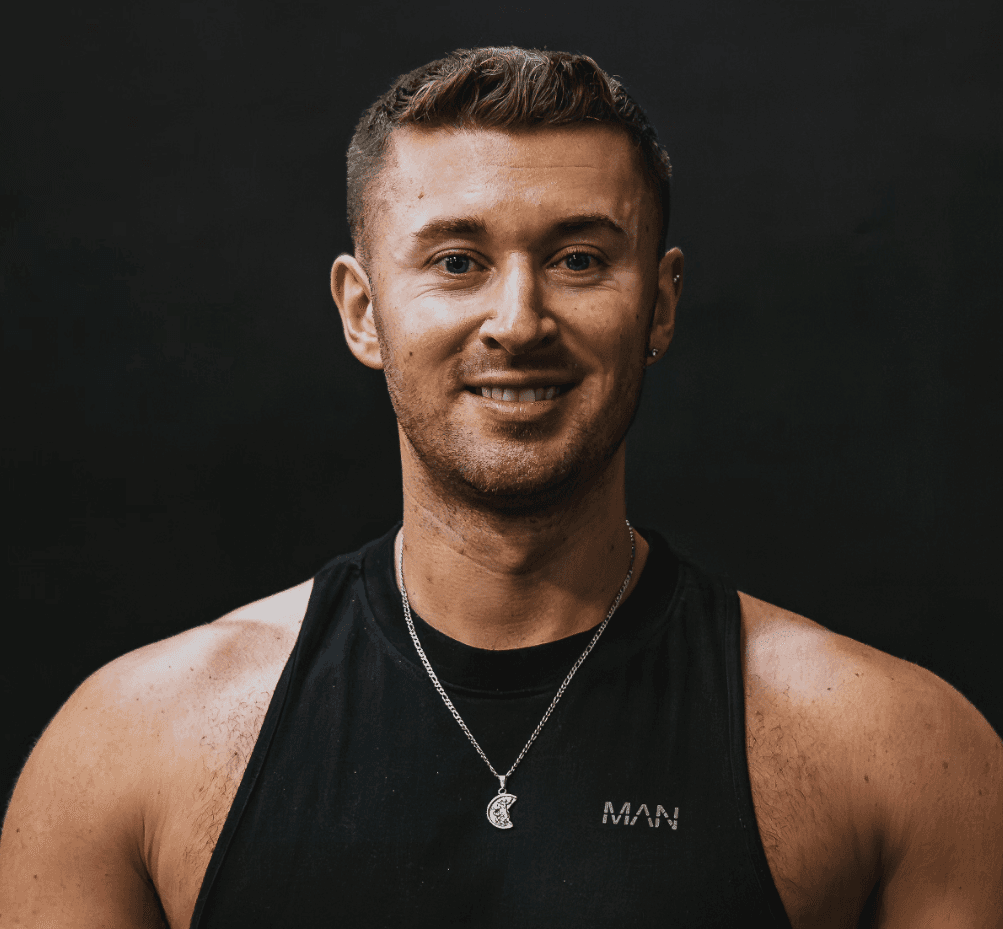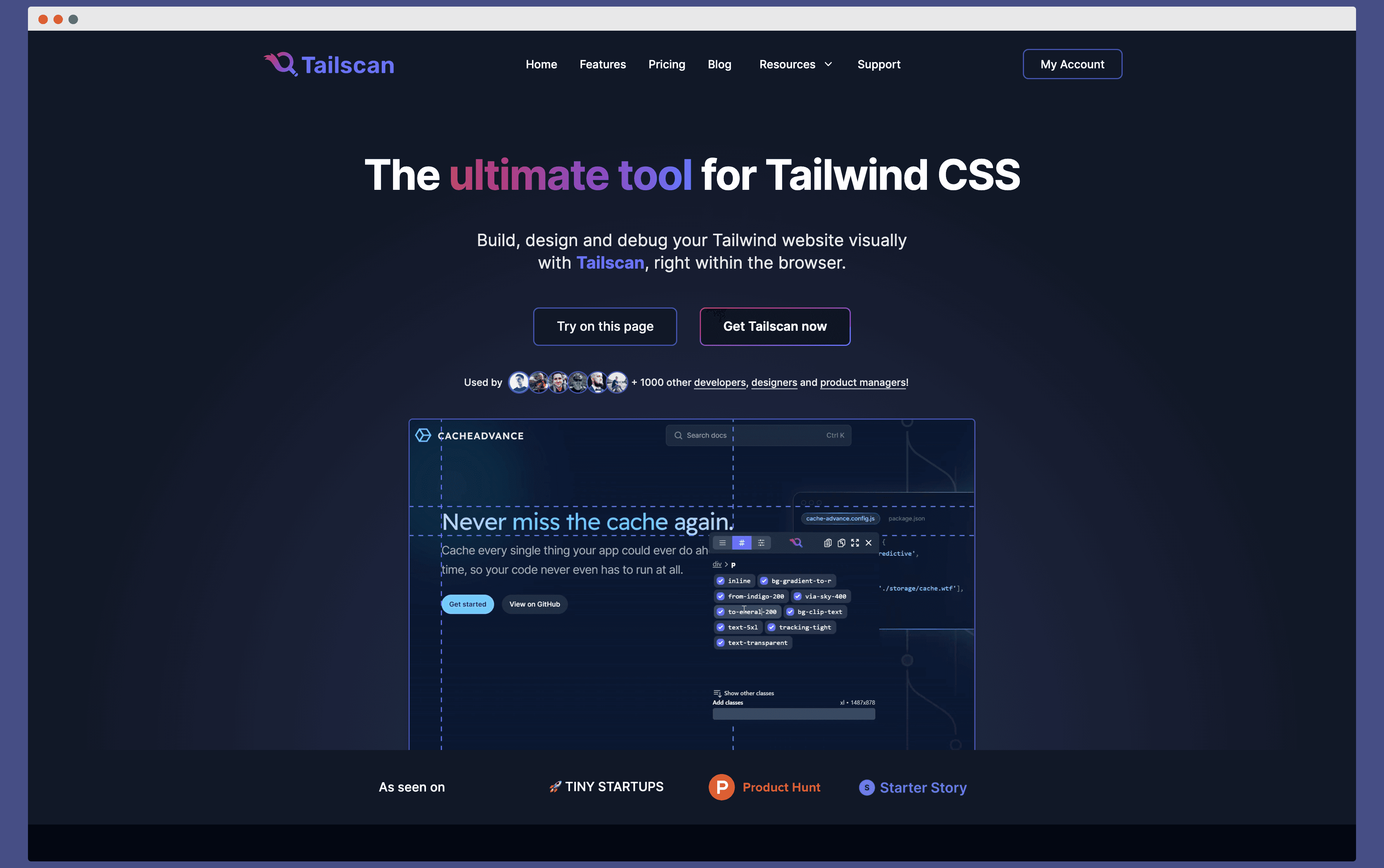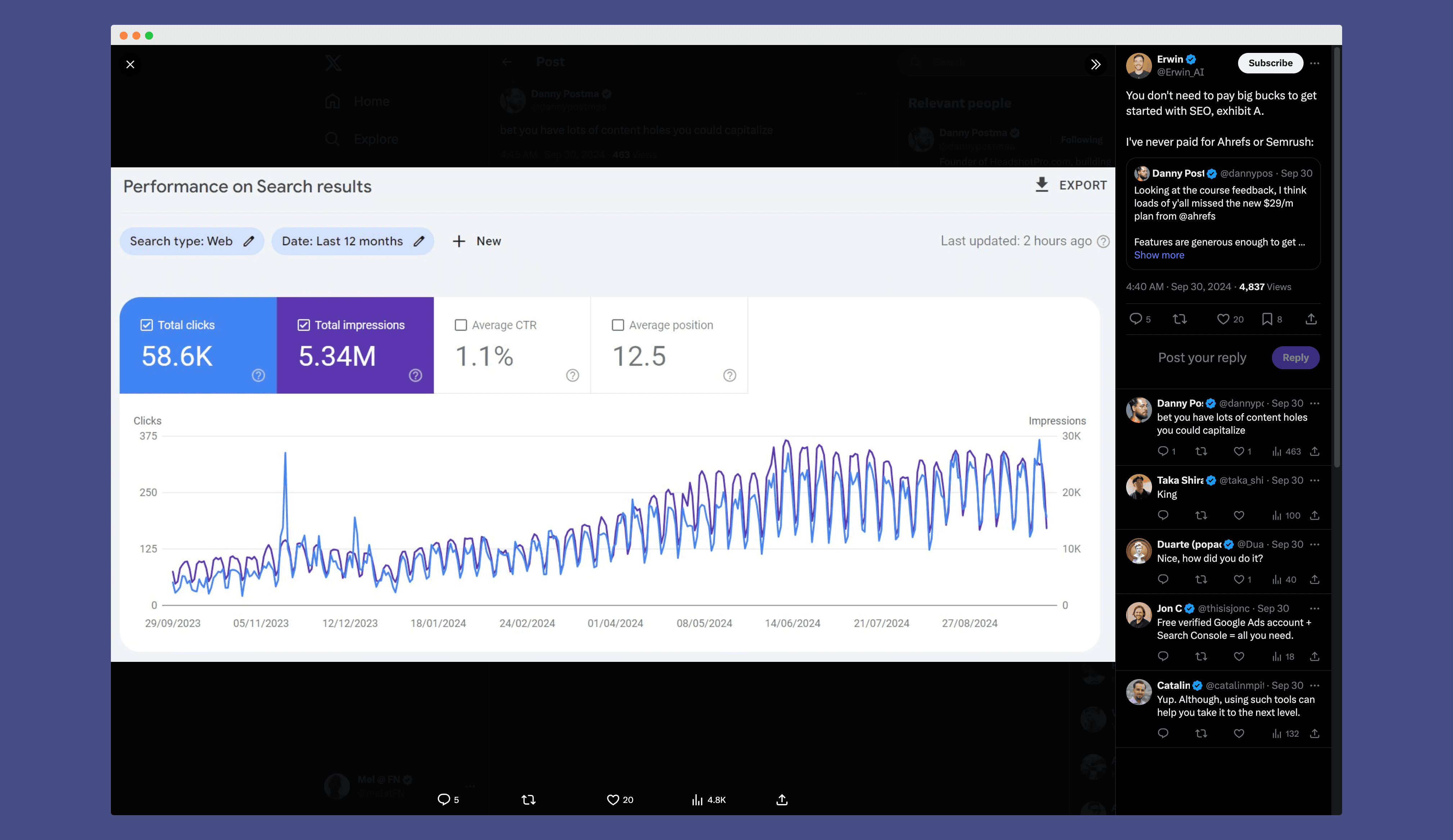How Erwin Grew His Browser Extension to $4K/Month by Building in Public
How Erwin Grew His Browser Extension to $4K/Month by Building in Public
Nov 12, 2024


Erwin Lengkeek
Erwin Lengkeek
⏳ 6 min
⏳ 6 min
Revenue/month
Revenue/month
$4,000
$4,000
$4,000
No. of founders
No. of founders
1
1
1
Startup costs
Startup costs
$100
$100
$100
Company type
Company type
Company type
SaaS
SaaS
SaaS
Contents
Introduction
Introduction
Erwin Lengkeek wasn’t new to tech when he launched his first software startup. In fact, his coding journey began years earlier, thanks to his sister’s early encouragement and a series of tech experiments as a teenager. But even after years of technical learning, his entrepreneurial journey wasn’t smooth sailing. It took two failed projects and a fresh approach—building in public—to finally find traction with Tailscan, his design tool for Tailwind CSS users. Here’s how he made it happen.
Erwin Lengkeek wasn’t new to tech when he launched his first software startup. In fact, his coding journey began years earlier, thanks to his sister’s early encouragement and a series of tech experiments as a teenager. But even after years of technical learning, his entrepreneurial journey wasn’t smooth sailing. It took two failed projects and a fresh approach—building in public—to finally find traction with Tailscan, his design tool for Tailwind CSS users. Here’s how he made it happen.
A Techie from Day One
A Techie from Day One
Erwin’s tech journey started young. When he was just 12, his sister introduced him to PHP forums, sparking a love for coding that’s lasted a lifetime. Like many future indie hackers, he didn’t stop at one language; his early experiments ranged from Minecraft plugins in Java to a website selling ringtones. Spoiler: that ringtone business never took off—his mom was his only customer, But for Erwin, the process was all about learning.
After college, he landed a role at a consulting company, where he quickly got a taste of real-world programming. This independence was a preview of the freedom he’d later seek with his own projects. But first, there was a stint of freelancing and a pivotal move to Bali.
Erwin’s tech journey started young. When he was just 12, his sister introduced him to PHP forums, sparking a love for coding that’s lasted a lifetime. Like many future indie hackers, he didn’t stop at one language; his early experiments ranged from Minecraft plugins in Java to a website selling ringtones. Spoiler: that ringtone business never took off—his mom was his only customer, But for Erwin, the process was all about learning.
After college, he landed a role at a consulting company, where he quickly got a taste of real-world programming. This independence was a preview of the freedom he’d later seek with his own projects. But first, there was a stint of freelancing and a pivotal move to Bali.

















2,678+ people enjoy it
➤ Every week, we dig up stories of how regular people started and grew their businesses—
➤ Plus the marketing hacks that won them customers.
➤ Then, we share those insights with you.
➤ Every week, we dig up stories of how regular people started and grew their businesses—
➤ Plus the marketing hacks that won them customers.
➤ Then, we share those insights with you.
Discovering Indie Hacking in Bali
Discovering Indie Hacking in Bali
Living in Bali, Erwin discovered co-working spaces and connected with other digital nomads, including a well-known figure named Petier Levels. Through these interactions, he caught the indie hacking bug—building self-sustaining software businesses without investor funding. But the road wasn’t as easy as it looked. While the freedom of indie hacking was inspiring, the path would take some unexpected turns.
Living in Bali, Erwin discovered co-working spaces and connected with other digital nomads, including a well-known figure named Petier Levels. Through these interactions, he caught the indie hacking bug—building self-sustaining software businesses without investor funding. But the road wasn’t as easy as it looked. While the freedom of indie hacking was inspiring, the path would take some unexpected turns.
Learning the Hard Way: Two Failed Projects
Learning the Hard Way: Two Failed Projects
Erwin’s first indie project was a Slack integration called Sparkly, designed to help companies connect employees with similar interests. He launched in 2019, and things started promisingly, especially with Walmart signing on as a customer. But as Covid-19 changed workplace dynamics, the traction faded. After hitting $300 in monthly recurring revenue (MRR), it eventually fizzled out.
Undeterred, Erwin tried again. His second project, Base Styles, was a branding platform. However, it turned out to be a non-starter, gathering just 100 trial users and no real conversions. After pouring ten months into Base Styles, the lack of customers was disheartening. Reflecting on these failures, Erwin learned a valuable lesson: he needed a fresh strategy.
Erwin’s first indie project was a Slack integration called Sparkly, designed to help companies connect employees with similar interests. He launched in 2019, and things started promisingly, especially with Walmart signing on as a customer. But as Covid-19 changed workplace dynamics, the traction faded. After hitting $300 in monthly recurring revenue (MRR), it eventually fizzled out.
Undeterred, Erwin tried again. His second project, Base Styles, was a branding platform. However, it turned out to be a non-starter, gathering just 100 trial users and no real conversions. After pouring ten months into Base Styles, the lack of customers was disheartening. Reflecting on these failures, Erwin learned a valuable lesson: he needed a fresh strategy.
Building in Public: A Game Changer
Building in Public: A Game Changer
Tailscan wasn’t just a result of Erwin’s coding skills—it was born from frustration. While working on Base Styles, he found switching between his integrated development environment (IDE) and browser tiresome, especially when working on visual changes. So, he created a simple JavaScript browser extension to make the design process smoother. This personal tool would soon become the basis for Tailscan, a browser extension that simplifies designing and debugging Tailwind CSS websites.
(A screenshot of tailscan.com's landing page)

Erwin knew he needed a new approach to build traction for Tailscan, so he tried something he hadn’t done before — building in public. He began sharing Tailscan’s progress online, posting weekly demos on Twitter, despite his initial reluctance about social media. And it worked. His first demo post attracted 70,000 impressions and 500 likes—an amazing result, given his follower count was around 300 at the time. (He now has about 9,000 followers)
Tailscan wasn’t just a result of Erwin’s coding skills—it was born from frustration. While working on Base Styles, he found switching between his integrated development environment (IDE) and browser tiresome, especially when working on visual changes. So, he created a simple JavaScript browser extension to make the design process smoother. This personal tool would soon become the basis for Tailscan, a browser extension that simplifies designing and debugging Tailwind CSS websites.
(A screenshot of tailscan.com's landing page)

Erwin knew he needed a new approach to build traction for Tailscan, so he tried something he hadn’t done before — building in public. He began sharing Tailscan’s progress online, posting weekly demos on Twitter, despite his initial reluctance about social media. And it worked. His first demo post attracted 70,000 impressions and 500 likes—an amazing result, given his follower count was around 300 at the time. (He now has about 9,000 followers)
Why Building in Public Worked
Why Building in Public Worked
By sharing his journey, Erwin not only got feedback from potential users but also built anticipation around Tailscan. This engagement allowed him to refine the product based on real needs and showcase Tailscan to an audience who was genuinely interested in its development. He found that Twitter was an ideal platform for developers, many of whom shared, liked, and responded to his posts, amplifying Tailscan’s reach.
Erwin also started a newsletter for Tailscan, giving fans of his Twitter demos a more dedicated space to follow updates. As his email list grew, so did his confidence. He’d gone from two failed projects to a community of interested followers who were rooting for Tailscan’s success.
By sharing his journey, Erwin not only got feedback from potential users but also built anticipation around Tailscan. This engagement allowed him to refine the product based on real needs and showcase Tailscan to an audience who was genuinely interested in its development. He found that Twitter was an ideal platform for developers, many of whom shared, liked, and responded to his posts, amplifying Tailscan’s reach.
Erwin also started a newsletter for Tailscan, giving fans of his Twitter demos a more dedicated space to follow updates. As his email list grew, so did his confidence. He’d gone from two failed projects to a community of interested followers who were rooting for Tailscan’s success.
The Product Hunt Launch That Changed Everything
The Product Hunt Launch That Changed Everything
When Tailscan was ready, Erwin launched on Product Hunt—a platform that allows creators to showcase their projects to an engaged tech audience. With his Twitter followers and newsletter subscribers already onboard, the launch went off with a bang. The product resonated, securing about 40 customers who purchased yearly licenses at $39 each. It wasn’t huge, but it was validation.
The early success motivated Erwin to continue building out Tailscan based on user feedback, leading to major feature updates and ultimately a more robust tool for developers. His confidence was finally paying off, but Erwin wasn’t done yet.
When Tailscan was ready, Erwin launched on Product Hunt—a platform that allows creators to showcase their projects to an engaged tech audience. With his Twitter followers and newsletter subscribers already onboard, the launch went off with a bang. The product resonated, securing about 40 customers who purchased yearly licenses at $39 each. It wasn’t huge, but it was validation.
The early success motivated Erwin to continue building out Tailscan based on user feedback, leading to major feature updates and ultimately a more robust tool for developers. His confidence was finally paying off, but Erwin wasn’t done yet.
Scaling Up: Listening to Customer Feedback
Scaling Up: Listening to Customer Feedback
Once Tailscan launched, user feedback became a crucial part of Erwin’s roadmap. As his user base grew, so did the requests for new features. One of the most popular updates was a “CSS to Tailwind” converter, which allowed users to turn any part of a website into a Tailwind component. This single feature took five months to develop but became one of Tailscan’s biggest draws.
Another key update was integrating Tailscan directly into the Chrome dev tools. Originally, Tailscan functioned as an overlay, which could clutter smaller screens. This change made Tailscan more accessible and user-friendly, showing Erwin the power of listening to users and iterating accordingly.
Once Tailscan launched, user feedback became a crucial part of Erwin’s roadmap. As his user base grew, so did the requests for new features. One of the most popular updates was a “CSS to Tailwind” converter, which allowed users to turn any part of a website into a Tailwind component. This single feature took five months to develop but became one of Tailscan’s biggest draws.
Another key update was integrating Tailscan directly into the Chrome dev tools. Originally, Tailscan functioned as an overlay, which could clutter smaller screens. This change made Tailscan more accessible and user-friendly, showing Erwin the power of listening to users and iterating accordingly.
Getting the Right Pricing
Getting the Right Pricing
In the beginning, Tailscan offered only a yearly license, priced at around $39. But Erwin quickly realized that he’d need far more customers than he could manage to make the business sustainable. So, he added a monthly plan and a lifetime license option, which allowed users to pay once and own the tool forever.
The pricing shift proved beneficial, raising his MRR from $600 to $2000 almost overnight. Highlighting the lifetime license on Tailscan’s landing page boosted sales even further, helping to stabilize revenue as monthly customers converted to lifetime users. Erwin did experience churn with the monthly subscriptions, but lifetime licenses more than compensated for it, generating consistent revenue and giving Tailscan a financial cushion for growth.
In the beginning, Tailscan offered only a yearly license, priced at around $39. But Erwin quickly realized that he’d need far more customers than he could manage to make the business sustainable. So, he added a monthly plan and a lifetime license option, which allowed users to pay once and own the tool forever.
The pricing shift proved beneficial, raising his MRR from $600 to $2000 almost overnight. Highlighting the lifetime license on Tailscan’s landing page boosted sales even further, helping to stabilize revenue as monthly customers converted to lifetime users. Erwin did experience churn with the monthly subscriptions, but lifetime licenses more than compensated for it, generating consistent revenue and giving Tailscan a financial cushion for growth.
Boost your business visibility to thousands of engaged readers!
Get Featured on 100+ pages across the FounderNoon website.
One month stretch ⇢ $100
Three-month stretch ⇢ $250
Boost your business visibility to thousands of engaged readers!
Get Featured on 100+ pages across the FounderNoon website.
One month stretch ⇢ $100
Three-month stretch ⇢ $250
Trial, Error, and Success in Marketing
Trial, Error, and Success in Marketing
With limited funds for marketing, Erwin tested multiple channels to find what worked best. He tried newsletter sponsorships and influencer partnerships, but the results were mixed. Sponsored newsletters in his niche brought low conversions, and influencer marketing—especially on TikTok—didn’t lead to significant results.
What did work, though, was consistent engagement on Twitter and regular Product Hunt launches. By spacing out major updates, Erwin was able to keep Tailscan on Product Hunt’s radar every six months, each time generating a fresh wave of interest. However, the most powerful driver turned out to be SEO.
(Analytics of Tailscan posted by Erwin on X)

Over time, Erwin added content-rich pages to the Tailscan website, each focusing on technical help and Tailwind classes. These pages generated modest traffic individually but, combined, they provided steady, long-term growth, driving 70-80% of Tailscan’s traffic.
With limited funds for marketing, Erwin tested multiple channels to find what worked best. He tried newsletter sponsorships and influencer partnerships, but the results were mixed. Sponsored newsletters in his niche brought low conversions, and influencer marketing—especially on TikTok—didn’t lead to significant results.
What did work, though, was consistent engagement on Twitter and regular Product Hunt launches. By spacing out major updates, Erwin was able to keep Tailscan on Product Hunt’s radar every six months, each time generating a fresh wave of interest. However, the most powerful driver turned out to be SEO.
(Analytics of Tailscan posted by Erwin on X)

Over time, Erwin added content-rich pages to the Tailscan website, each focusing on technical help and Tailwind classes. These pages generated modest traffic individually but, combined, they provided steady, long-term growth, driving 70-80% of Tailscan’s traffic.
Lessons Learned and Advice for Future Indie Hackers
Lessons Learned and Advice for Future Indie Hackers
For Erwin, the journey to successful indie hacking was as much about mindset as it was about product development. His biggest piece of advice? Stay curious. According to Erwin, there are three key ways indie hackers view their projects: some are highly technical, others are sales-focused, and a third group prioritizes conversion optimization. It’s this third perspective—thinking about user interaction and behavior—that he credits with Tailscan’s success.
Erwin also believes in the power of sharing your journey. “Write articles, tweets, blogs,”— urging future indie hackers to embrace content creation. Building an online presence made a huge difference for him and Tailscan, and it’s one of the simplest ways for others to start engaging with potential users.
For Erwin, the journey to successful indie hacking was as much about mindset as it was about product development. His biggest piece of advice? Stay curious. According to Erwin, there are three key ways indie hackers view their projects: some are highly technical, others are sales-focused, and a third group prioritizes conversion optimization. It’s this third perspective—thinking about user interaction and behavior—that he credits with Tailscan’s success.
Erwin also believes in the power of sharing your journey. “Write articles, tweets, blogs,”— urging future indie hackers to embrace content creation. Building an online presence made a huge difference for him and Tailscan, and it’s one of the simplest ways for others to start engaging with potential users.
The Freedom of Indie Hacking
The Freedom of Indie Hacking
Success has given Erwin the freedom to live and work on his terms. Unlike the stable but restrictive consulting job he had before, indie hacking has allowed him to take bigger risks, both personally and professionally. Erwin describes the experience as life-changing, one that has enhanced every part of his life.
Through Tailscan, Erwin discovered that success in indie hacking is cumulative. It’s about small wins, steady learning, and connecting with users who believe in what you’re building. And as his story shows, with the right mindset and perseverance, even the third attempt can be the charm.
If you're interested in more stories like this, here's more for you 🙂
P.S. I’ve got a weekly newsletter where I share stories about founders who have started successful online businesses, growth strategies, business ideas, and tips to start/grow your own business. I would love for you to join here
Shoot me a DM if you want to share your story or visit this page to submit your information 💌
Success has given Erwin the freedom to live and work on his terms. Unlike the stable but restrictive consulting job he had before, indie hacking has allowed him to take bigger risks, both personally and professionally. Erwin describes the experience as life-changing, one that has enhanced every part of his life.
Through Tailscan, Erwin discovered that success in indie hacking is cumulative. It’s about small wins, steady learning, and connecting with users who believe in what you’re building. And as his story shows, with the right mindset and perseverance, even the third attempt can be the charm.
If you're interested in more stories like this, here's more for you 🙂
P.S. I’ve got a weekly newsletter where I share stories about founders who have started successful online businesses, growth strategies, business ideas, and tips to start/grow your own business. I would love for you to join here
Shoot me a DM if you want to share your story or visit this page to submit your information 💌







